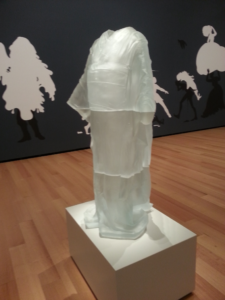Effect Of Moxibustion on HRV depends on Temperature
Kristen Sparrow • October 16, 2019


This article shows that after a threshold temperature on the forearm, there is more complexity in local blood flow, but also on HRV. I’m not sure how to use this information exactly. Moxibustion is not a modality that’s easy for me to use in the clinic. But I like the fact that they looked at this, and it reinforces the potential utility of using HRV as a biomarker. It may be a stretch, but I think the fact that they could pinpoint the fact that above a certain temperature you saw a change in HRV and below you didn’t, may be significant.
Addendum: In doing research for my quixotic project of trying to compile evidence of interest about the evidence for acupuncture, I’m trying to get up to speed on Immunology. I found this reference to Trpv1 a vanilloid receptor. It is specific for temperatures above 43 degrees. So perhaps the lack of variation below 42 degrees means that this receptor is not being triggered. One thought anyway. But maybe useful for “at home” moxa use.
Abstract: To investigate the relationship between local blood flux and heart rate variability following different thermal stimulations, healthy subjects were recruited and subject to different thermal stimulations on the right forearm. Multiscale entropy and multiscale fuzzy entropy were used to measure the complexity of the local blood flux, and the approximate entropy was calculated to evaluate the HRV complexity. The results indicated that thermal stimulation significantly increased local blood flux and that different temperature stimulations resulted in different complexities in local blood flux. A 42 °C or 44 °C thermal stimulation, other than stimulations below 42 °C, resulted in a moderate correlation between local blood flux and heart rate variability complexity. The results provide a new perspective in terms of complexity to explore the relationship between skin blood flux signals and cardiac function…
Discussion: Approximate entropy (ApEn) is among the indicators of signal complexity27. Large values of ApEn indicate high complexity in the signal, and smaller values mean a more regular signal. The results of the current study suggest that different temperature stimuli have no significant effect on the ApEn of heart rate variability (Fig. S5). However, there was a significant linear correlation between local blood flux and heart rate variability at 42 °C and 44 °C of stimulation. This significant linear correlation is not only reflected in the MSE results (Fig. 6g,i) but also in the MFE results (Fig. 6h and j). When the stimulation temperature is less than 42 °C, there is no such correlation (Fig. 6a, b,c,d,e and f), and this correlation also cannot be found in the parallel blank control group (Fig. S6).

